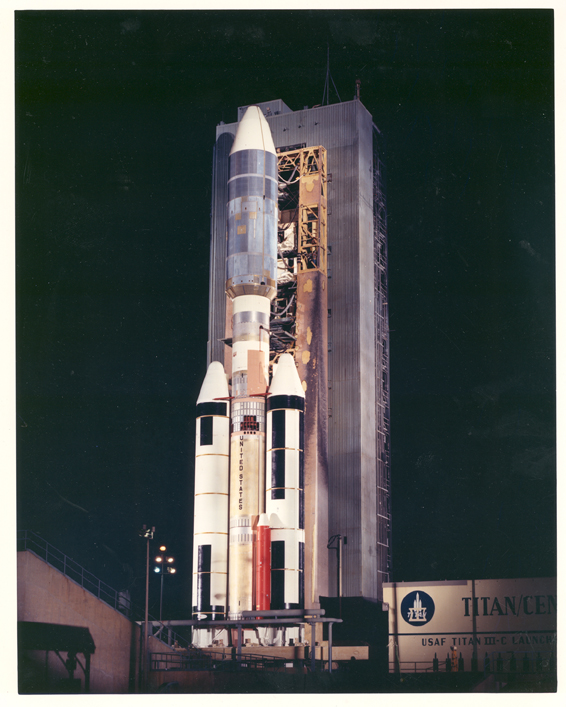Space History Photo: Viking Pre-Launch Test Flight

In this historical photo from the U.S. space agency, the Titan booster, a two-stage liquid-fueled rocket, with two additional large, solid-propellant rockets attached, awaits pre-launch testing on January 20, 1974. It is a member of the Titan family that was used in NASA's Gemini program.
The Centaur is a liquid oxygen- liquid hydrogen, high- energy upper stage used on Surveyor flights to the Moon and on Mariner flights to Mars. At liftoff, the solid rockets provide 9.61 million newtons (2.16 million pounds) of thrust. When the solids burn out, the first stage of the Titan booster ignites, and followed by the second-stage ignition as the first stage shuts down. The Centaur ignites on second stage shutdown to inject the spacecraft into orbit. Then after a 30-minute coast around the Earth into position for re-start, the Centaur re-ignites to propel Viking on its Mars trajectory.
Once this maneuver is completed the spacecraft separates from the Centaur, which subsequently is deflected away from the flight path to prevent its impact on the surface of Mars. Shortly after separating from the Centaur, the orbiter portion of the combined orbiter-lander spacecraft orients and stabilizes the spacecraft by using the Sun and a very bright star in the southern sky, Canopus, for celestial reference. For more information about Titan and Centaur, please see Chapters 4 and 8, respectively, in Roger Launius and Dennis Jenkins' book To Reach the High Frontier published by The University Press of Kentucky in 2002.
Each weekday, SPACE.com looks back at the history of spaceflight through photos (archive).
Get the Space.com Newsletter
Breaking space news, the latest updates on rocket launches, skywatching events and more!
Join our Space Forums to keep talking space on the latest missions, night sky and more! And if you have a news tip, correction or comment, let us know at: community@space.com.

The National Aeronautics and Space Administration (NASA) is the U.S. government agency in charge of the civilian space program as well as aeronautics and aerospace research. Founded in 1958, NASA is a civilian space agency aimed at exploring the universe with space telescopes, satellites, robotic spacecraft, astronauts and more. The space agency has 10 major centers based across the U.S. and launches robotic and crewed missions from the Kennedy Space Center in Cape Canaveral Florida. It's astronaut corps is based at the Johnson Space Center in Houston. To follow NASA's latest mission, follow the space agency on Twitter or any other social channel, of visit: nasa.gov.









